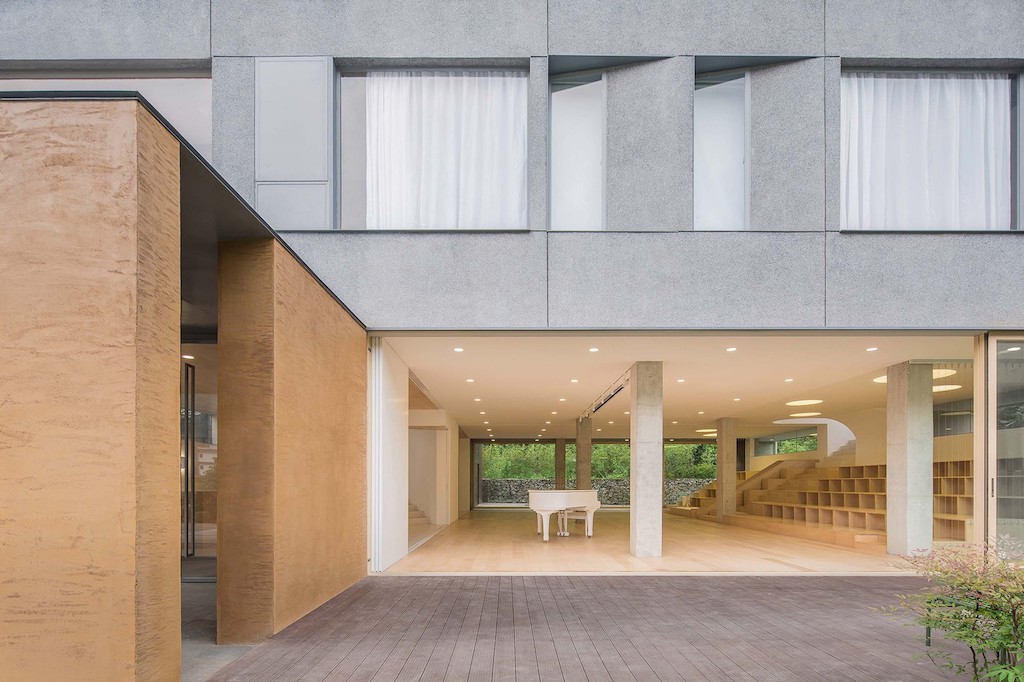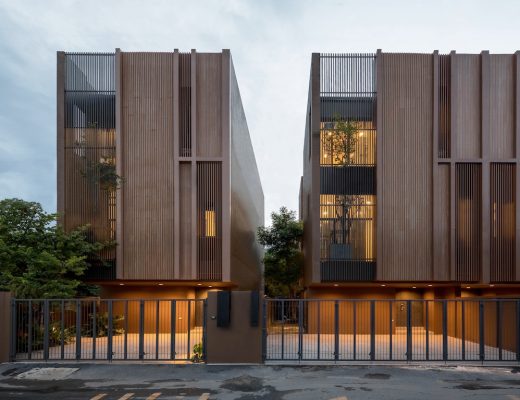Shenzhen-based architecture firm Fabersociety has designed a boutique hotel in the resort town of Yangshuo, outside Guilin city in Xingping County in southern China. Located on a former vernacular community structure, the 1,194m² property explores local culture through community building and child-friendly design.

The architects have attempted to explore the strategies to transform an archetypal building into a centre of architectural and community significance. With the opening of high-speed train station in early 2016, Xingping County has become a sought-after tourist destination in the country. With hotels and guesthouses sprouting alongside the river, and local residents building concrete houses in hopes of leasing them to visitors, there was a lack of a well-designed property that could cater to discerning families.

“In the context of Geemu’s conception, when we initially arrived at the site, we were at loss with the banality and low-efficiency of the given space. It was located perhaps too close to the hill and its volume was a bit imposing in contrast to the small rural houses that surrounded it.” – Team of Fabersociety architects
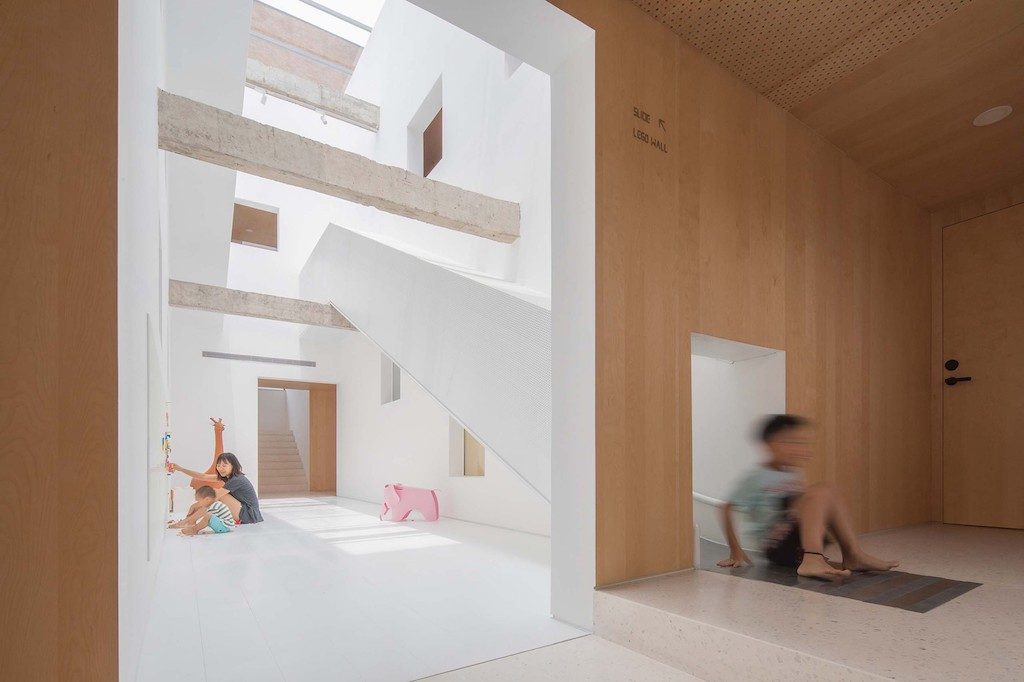
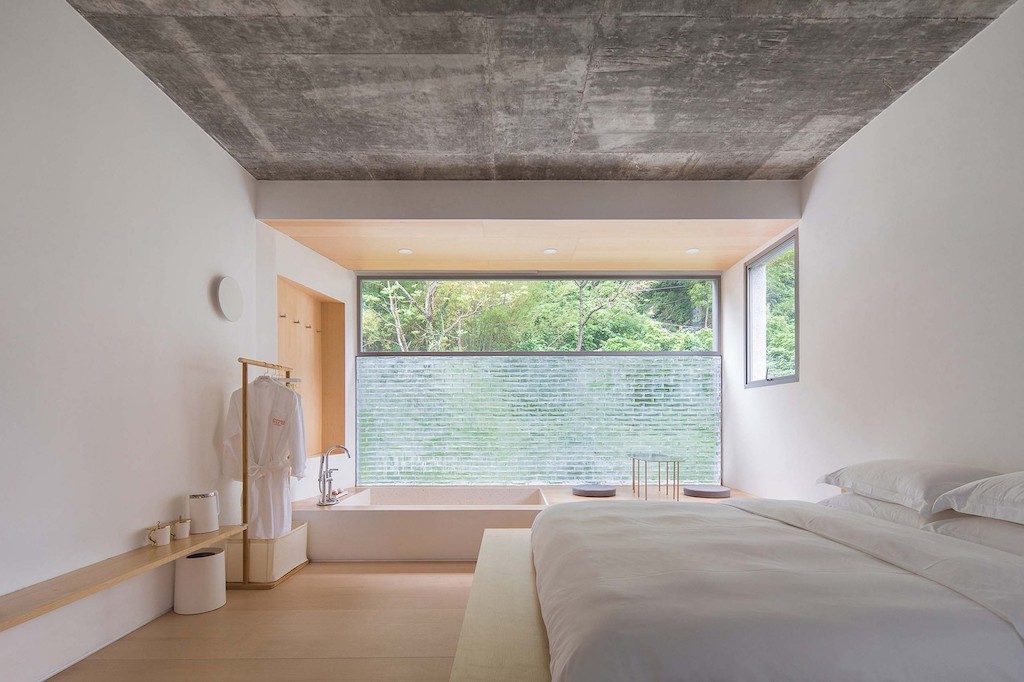
The team decided to embrace the existing conditions and establish co-existence with the new. Constrained by structure and changing conditions of property rights, the main part of the building is maintained as a living space, as originally envisioned, while new programmes protrude out in smaller boxes, creating a dialogue with its surroundings, and making its scale somewhat less overwhelming in comparison to the surrounding structures. The main facade is finished with granite-stucco coating, while the boxes are earth-coloured to mark their difference.
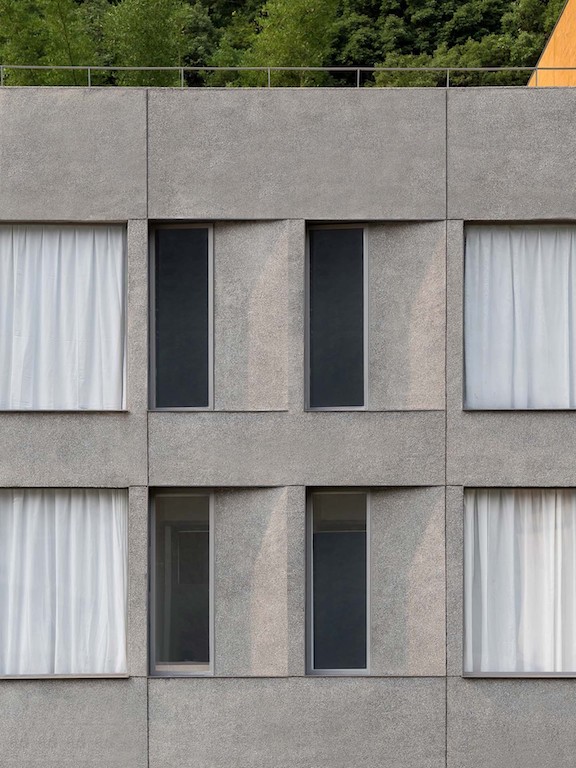

The ground floor is a large open expanse, due to its original height and large span, the concrete frames were all optimised tectonically. The new lobby area optimises the open space and blurs the distinction between the indoor-outdoor, by integrating the reception, dining and service areas to the west, maximising the public space with theatre, playground, reading room and more. Furthermore, the sliding doors and large glass doors create a versatile and generous stage for events.
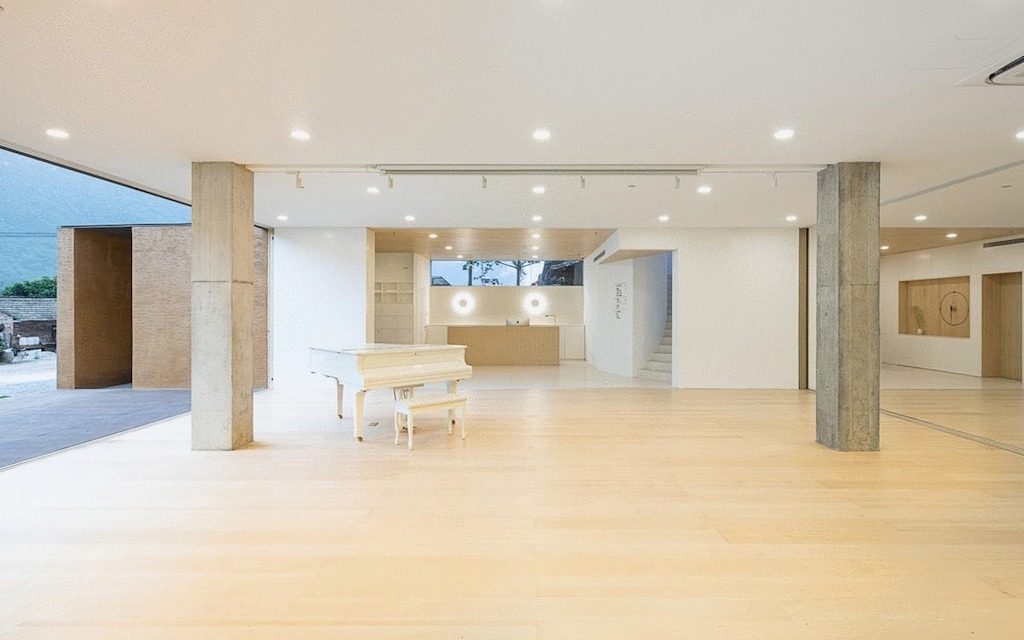
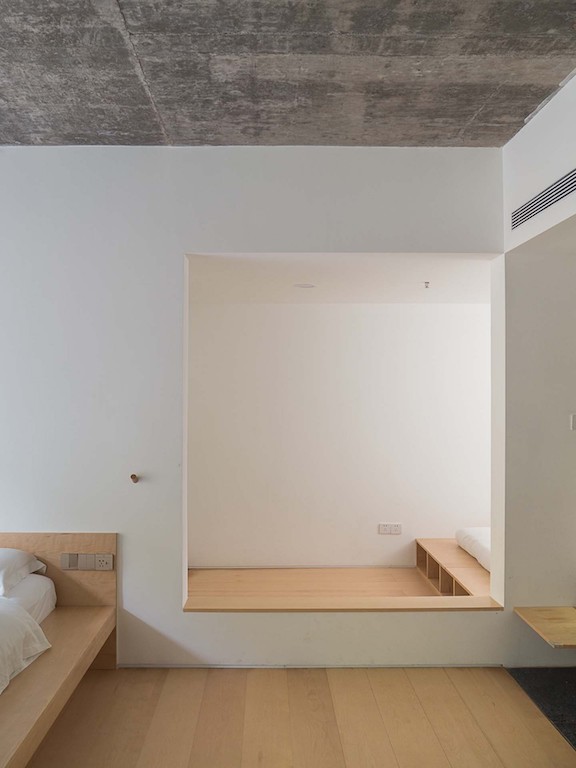
However, there are few spaces in the structural system to maneouvre above ground floor, so the renovation divides the middle room as an addition to the side rooms, creating a child-scaled bedroom and play area within a suite, which is connected to the atrium and away from the regular flow of spaces.
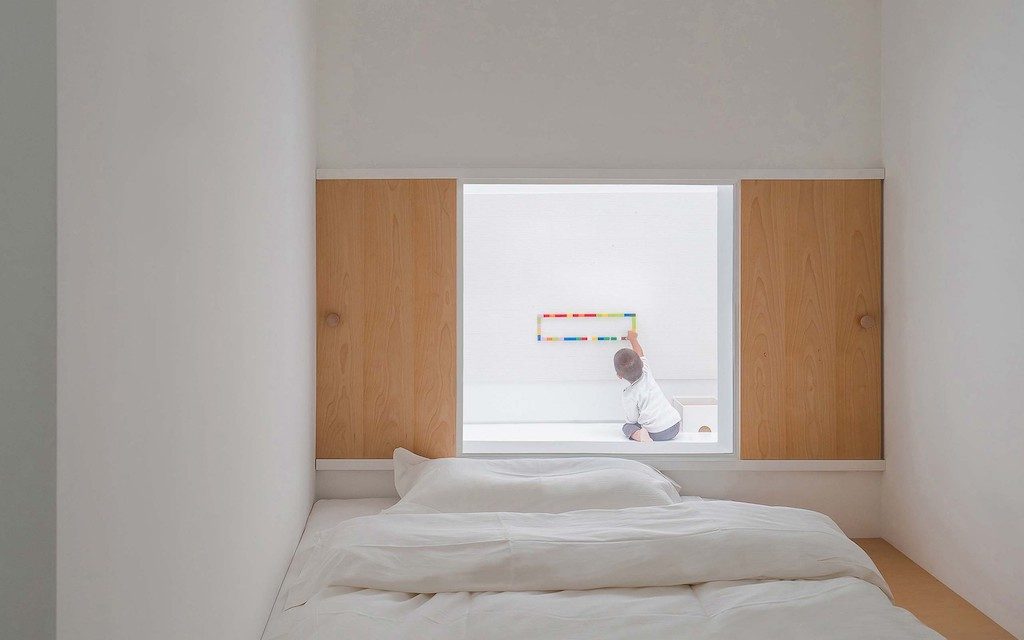
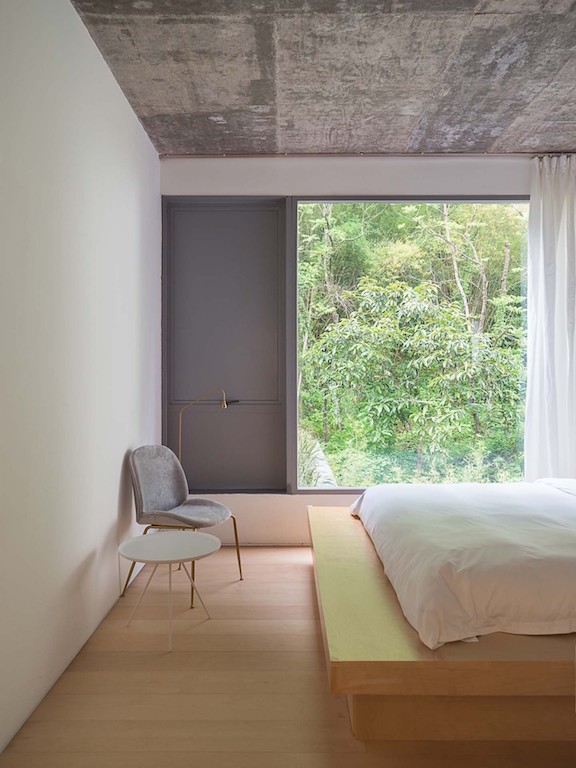
The atrium, introduced as a vertical intervention to change the horizontal organisation of the plan transformed the previously dark hallways into a lit-up space with more usage potential. With two long slides, the atrium provides new dynamics and breaks the regular circulation and connects the floors as one space. The division of the middle room and installation of core-wall establishes the principles of structural reinforcement.
Photos: Chao Zhang

